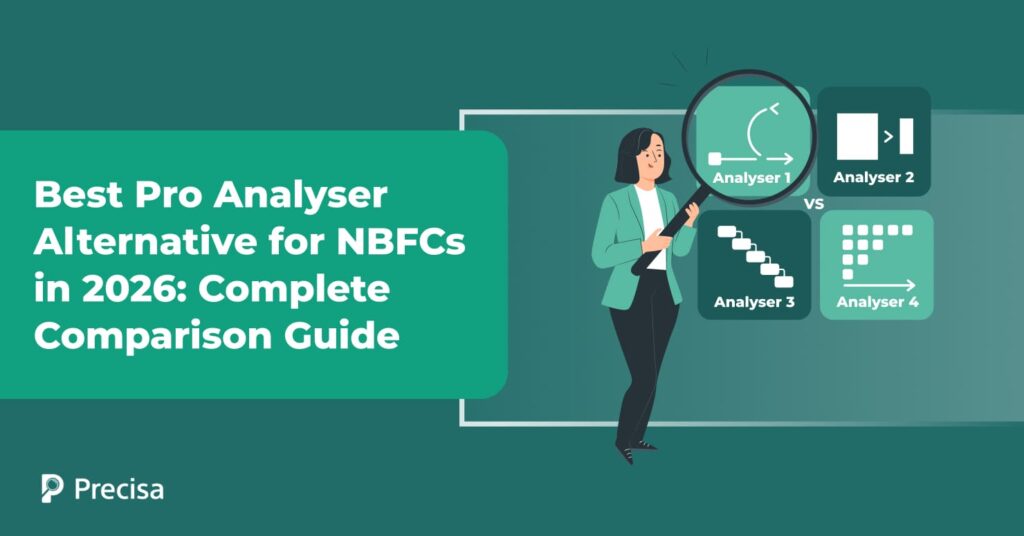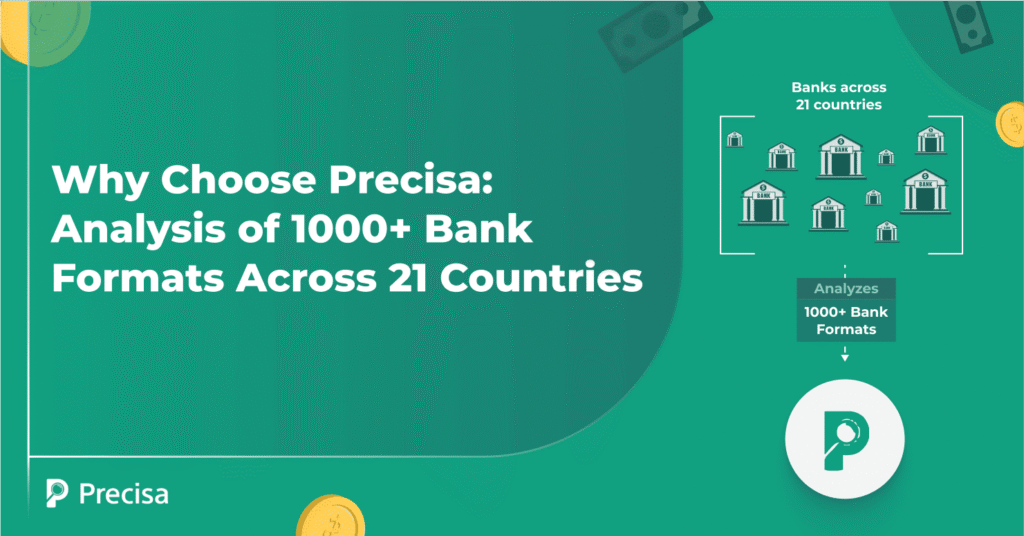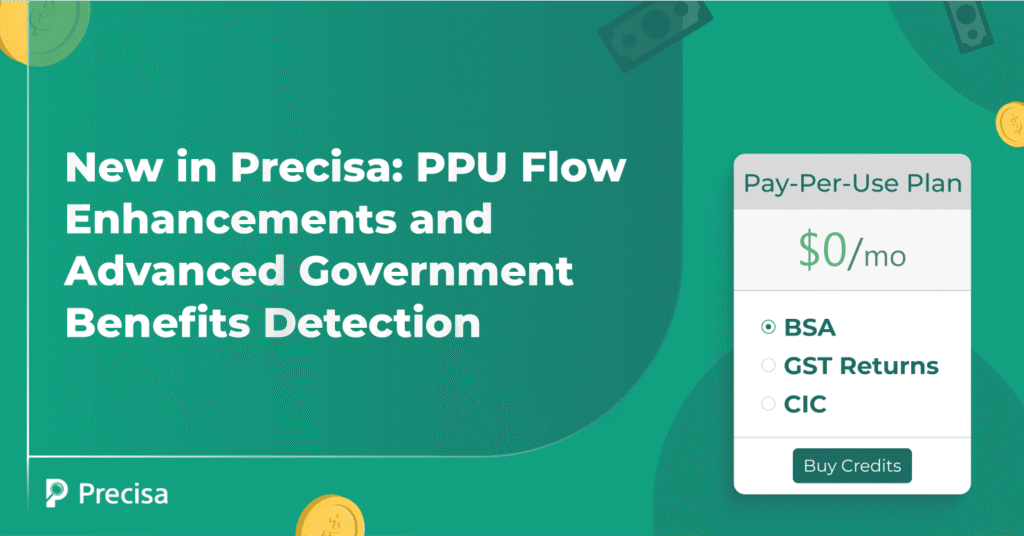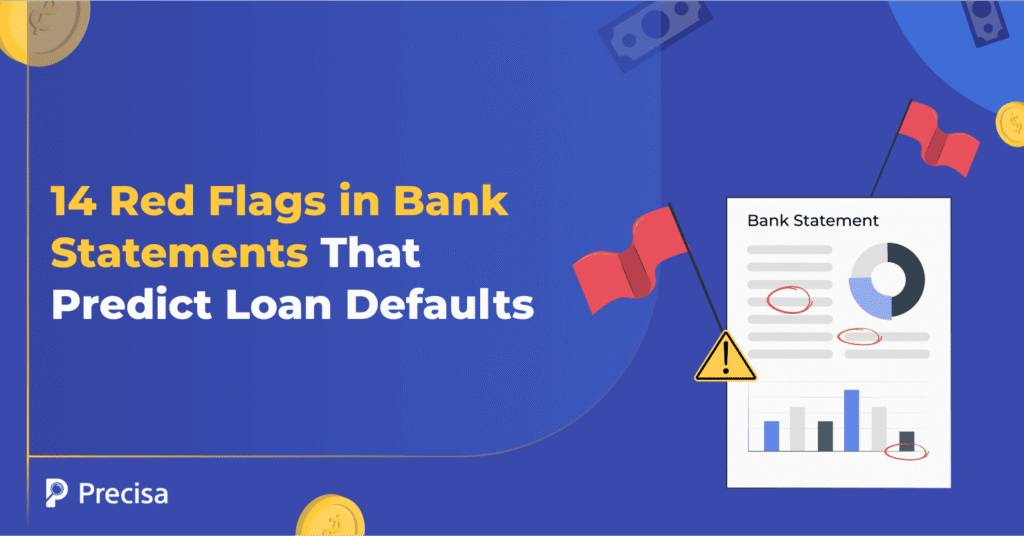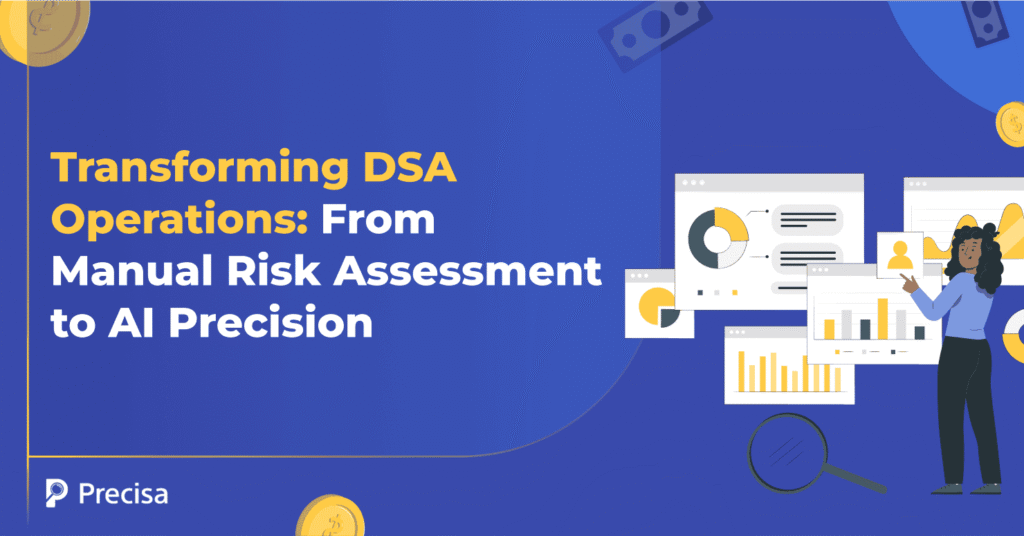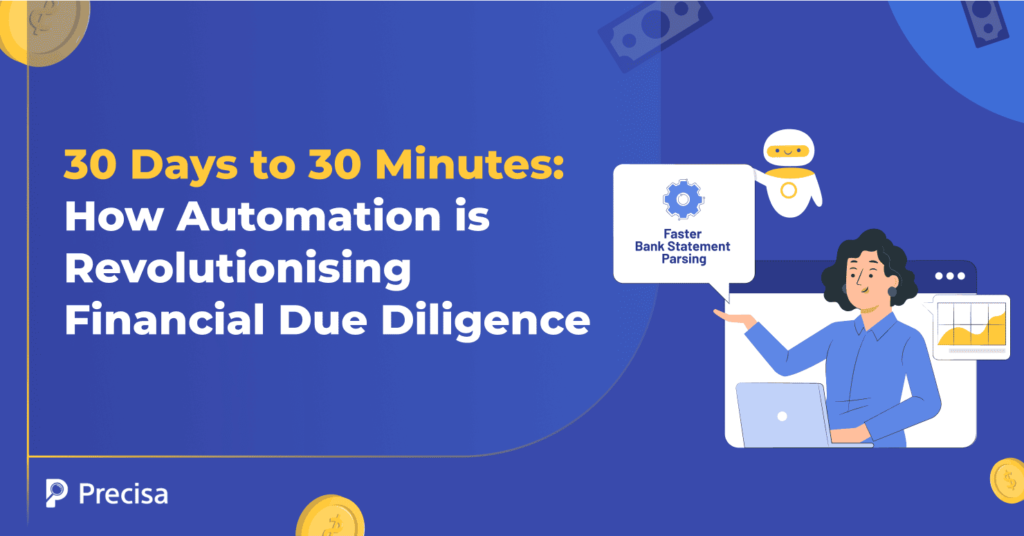Do you rely on bank statements to get an accurate picture of the borrower’s financial health, and does the statement you got look perfect? If so, you need to scrutinise the document more carefully to determine whether the statement has been staged. Spotting circular transactions could be a good place to start. Circular transactions involve […]
Pro Analyser Alternative: Why NBFCs Trust Precisa as the Market Leader
As digital lending accelerates across India, financial institutions are evaluating bank statement analysis platforms that can handle growing portfolios while maintaining accuracy and compliance. Pro Analyser is a newer platform in the bank statement analysis space. However, Precisa has led this market for years, establishing the standard that newer entrants now attempt to match. NBFCs, […]
Why Choose Precisa: Analysis of 1000+ Bank Formats Across 21 Countries
Even with digital adoption, loan approvals in India still take considerable time. A major part of this delay comes from manual bank statement verification and financial assessment. Analysing one application traditionally takes 30 to 45 days. For a lending institution processing 100 applications monthly, that’s 3,000 to 4,500 days of cumulative work. As a result, […]
Fixed Obligation to Income Ratio Explained: Why Keeping FOIR Below 55% Is Crucial
Fixed Obligation to Income Ratio (FOIR) shows how much of your monthly income is already locked into fixed payments. This includes EMI payments, rent, and insurance premiums. When you apply for a loan, lenders assess your FOIR ratio to see if you can handle more debt. Most lenders in India favour your FOIR to stay […]
New in Precisa: PPU Flow Enhancements and Advanced Government Benefits Detection
We’re excited to announce the release of the most significant update of Precisa, delivering enhanced Pay-Per-Use capabilities and automatic government benefits detection in transactions. This release addresses the top user requests for flexible credit purchasing whilst advancing financial inclusion through intelligent transaction categorisation. Available now for all Precisa users, this update fundamentally changes how lenders […]
How Precisa’s Multi-User Financial Analysis Platform Serves Different Teams
Lending has never been a one-person job. Credit risk managers, compliance officers, and other financial teams must review the same applicant bank statements before making a decision. However, doing this manually without the right financial analysis platform can lead to costly errors. Consider this: data shows that 43% of occupational frauds were caught through tips, […]
14 Red Flags in Bank Statements That Predict Loan Defaults
Loan defaults are surging in India, especially for small-ticket and unsecured loans sectors. According to new data from March 2025, delinquencies (overdue by 90 days) spiked to 3.6%. Default rates are notably high among young borrowers and those in tier-3 cities. While traditional risk-scoring methods work fine, they rely heavily on credit history and CIBIL […]
Transforming DSA Operations: From Manual Risk Assessment to AI Precision
Today, the landscape for DSA Services and Direct Selling Agent operations is ͏shifting͏ ͏fast. Historically, ͏Direct Selling Agent teams͏ ͏u͏͏sed manual risk͏͏ assessments,͏ relying on spreadsheets, gut feel, and ͏time͏͏‑intensive ͏paperwork. That approach led ͏to slow ͏decisions and higher operational ͏risk.͏ Now, emerging ͏͏AI tools ͏offer precision: predictive analytics, ͏natural language processing͏, and real-time ͏͏monitoring. […]
From 30 Days to 30 Minutes: How Automation is Revolutionising Financial Due Diligence
Ask any loan officer what takes up most of their day, and you’ll hear the same complaint: bank statement reviews. Think about it – if you’re spending 2-3 hours per application, that’s basically half your work week just on paperwork. No wonder loan officers are burning out. Sure, this manual approach worked fine when processing […]
5 Key Challenges for Fintech Startups in India – And How to Solve Them
Over the last five years, the fintech industry in India has grown by leaps and bounds. As of September 2024, the combined valuation of all Indian fintech startups was estimated to be $125 billion. However, despite their success story, startups often grapple with a slew of challenges. For instance, the regulations governing fintech startups are […]


